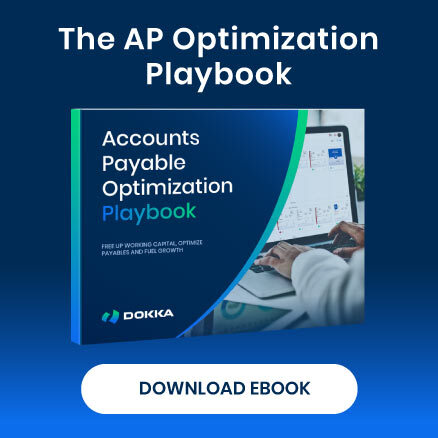The end of the month marks a crucial period for financial analysis and closing the books.
A well-executed month-end close process enables companies to assess their financial position, ensure accounts are accurately reported, and maintain compliance with regulations. It also resolves discrepancies and provides a clean slate for the next accounting period.
For many finance professionals, those final days can feel like a marathon: reconciling accounts, verifying data, and producing accurate reports under tight deadlines. Yet with the right structure, tools, and mindset, the process can be smooth, efficient, and far less stressful.
Want to know how? In this blog post, we’ll explore best practices for a stress-free month-end close — from preparation and prioritization to automation, collaboration, and continuous improvement.
What Is the Month-End Close?
The month-end close is the process of finalizing all financial transactions for the previous month and ensuring that the company’s books are accurate and complete.
It typically includes:
- Collecting data from various departments
- Reconciling accounts
- Preparing and posting journal entries
- Reviewing expenses and transactions
- Ensuring compliance with accounting standards
A precise and timely close provides leadership with an accurate view of the organization’s financial health. It supports sound decision-making, aids in budget planning, and promotes better resource allocation.
Delays or inaccuracies, on the other hand, can undermine confidence in financial reporting and create compliance risks.
Producing financial statements carries significant responsibility for finance teams, and the process can be stressful and time-consuming, particularly for businesses with complex financial records.
What Makes The Month-End Close Stressful?
Challenge 1: Tight Deadlines
The close process is inherently time-sensitive and can be incredibly stressful for anyone in the accounting department. Numerous tasks must be completed in a short period, which can lead to mistakes if the process is not managed properly.
Finance teams often navigate a long list of responsibilities while handling last-minute adjustments and inquiries from management. Without a clear plan, the pressure can result in burnout or errors.
The process also draws heightened attention, as stakeholders closely monitor anything that could impact month-end financial performance, including expenses and incoming revenue.
Challenge 2: High Attention to Detail
Even a single mistake in reporting can have major consequences — from regulatory penalties to damage to the company’s reputation — adding to the overall stress of the process.
Accuracy demands extreme focus, especially when handling high transaction volumes and complex data sources.
Completing this work efficiently and accurately leaves little room for error, placing significant pressure on finance teams. It’s not uncommon for those managing a month-end close to spend long hours at work ensuring all numbers align perfectly.
Challenge 3: Cross-Department Coordination
Closing the books requires input from multiple teams: accounting, operations, HR, procurement, and others. Coordinating across these departments can be challenging.
Each department must collect relevant data, verify its accuracy, review any potential discrepancies, communicate risks to key stakeholders, reconcile accounts with external vendors or partners if needed, enter necessary journal entries into the accounting system, generate reports for management review, analyze available data against estimated trends and budgets, and comply with regulatory guidelines when recording transactions.
The pressure to meet deadlines while ensuring accurate financial reporting adds to the overall stress.
All of these factors combined make the month-end close process a challenging and stressful time for everyone involved. It can be an intense environment, but there are common practices that can help keeping the stress under control.
Prepare Before Month-End
A successful close begins well before the last day of the month. Early preparation makes the official process faster and smoother.
- Reconcile accounts weekly: Don’t wait until month-end. Review and reconcile key accounts regularly to catch discrepancies early.
- Communicate deadlines in advance: Remind other departments of cut-off dates for expense submissions, invoices, and approvals.
- Resolve outstanding items: Identify missing receipts, unposted transactions, or open purchase orders ahead of time.
Proactive preparation reduces surprises and stress, allowing you to enter the close period more efficiently.
9 Best Practices For a Stress-free Month-End Close
- Stay Organized and Keep Calm
- Prioritize Key Tasks
- Establish a Clear Timeline
- Focus on Accuracy and Details
- Standardize the Process
- Strengthen Internal Controls
- Communicate and Collaborate Effectively
- Automate and Leverage Technology
- Learn and Improve Continuously
1) Stay Organized and Keep Calm
A calm, structured approach goes a long way. Use detailed checklists, maintain a consistent workflow, and block off focused time for critical tasks. Staying organized reduces the risk of missing steps and helps maintain clarity during a busy period.
2) Prioritize Key Tasks
Not all close activities carry the same level of importance. Start with high-impact items (such as reconciling bank accounts and validating major balances) before tackling less critical tasks. Prioritization ensures essential work is completed on time while maintaining accuracy.
3) Establish a Clear Timeline
A defined schedule keeps everyone aligned. Map out deadlines for each phase of the close, including when departments must submit data and when reconciliations or journal entries are due. Share this calendar company-wide to minimize confusion and last-minute delays.
4) Focus on Accuracy and Details
Accuracy should always take precedence over speed. Implement peer reviews or double checks within the finance team to ensure all numbers align. Build in a short review window before final reporting to catch inconsistencies early. Verifying data upfront saves hours of corrections later.
5) Standardize the Process
Consistency drives efficiency. Develop a standardized month-end close checklist that outlines each step, responsible person, and deadline. Standardization ensures continuity despite staff changes, reduces reliance on memory, and helps identify bottlenecks or tasks suitable for automation. Or simply download our 3 free checklist templates here.
6) Strengthen Internal Controls
Robust internal controls ensure reliability and compliance. Implement clear approval workflows for journal entries, maintain segregation of duties, and document review procedures. Proper controls protect against errors, fraud, and audit issues, all of which can disrupt a smooth close.
7) Communicate and Collaborate Effectively
Month-end close is a team effort, not just an accounting function. Encourage open communication across departments by:
- Holding short daily check-ins during close week
- Using shared dashboards or trackers to monitor progress
- Clearly defining ownership of each deliverable
Transparent collaboration prevents duplication of effort and keeps the process on schedule.
8) Automate and Leverage Technology
Manual work is slow, repetitive, and prone to errors. Leverage automation and accounting software to streamline data entry, reconciliations, and report generation. Cloud-based tools enable real-time collaboration and visibility, reducing the need for manual follow-ups.
Automation not only accelerates the process but also improves accuracy and frees the team to focus on analysis and strategic decision-making rather than routine data entry.
9) Learn and Improve Continuously
Each close is an opportunity for improvement. After completing the process, hold a short review meeting to discuss what worked well and what didn’t. Document lessons learned and adjust your checklist or timeline accordingly. Incremental improvements over time lead to faster, smoother, and more predictable closes.
Post-Close Review Checklist
After the close, review the following to identify improvement opportunities:
- Were all reconciliations completed on time?
- Did all departments meet their submission deadlines?
- Were any recurring errors or bottlenecks observed?
- Did automation tools function as expected?
- What changes can make next month’s close even smoother?
A quick review like this ensures you continuously refine your process.
Streamline Your Close with the Right Tools
The month-end close is one of the most demanding accounting responsibilities, but it doesn’t have to be. With preparation, structure, and the right technology, your team can transform a hectic scramble into a streamlined, predictable process.
Staying organized, prioritizing effectively, and standardizing procedures lay the groundwork for accuracy and efficiency. The next step is leveraging automation to reduce manual effort, minimize errors, and improve collaboration — and that’s where DOKKA’s financial close software makes all the difference.
DOKKA simplifies and accelerates every stage of the close. Its intelligent automation captures, categorizes, and reconciles financial data instantly, eliminating the need for manual entry.
Integrated document management and communication tools ensure every transaction is traceable and every team member stays aligned. The result: faster closes, cleaner books, and less stress.
Finance teams that use DOKKA gain more than automation: they gain time, accuracy, and control. Instead of chasing numbers and approvals, your team can focus on analysis, insights, and strategic decision-making.
A stress-free month-end close isn’t just possible — it’s a workflow. And with DOKKA, it’s a reality you can achieve month after month. Want to learn more about how DOKKA can help your team? Book a free demo today.




